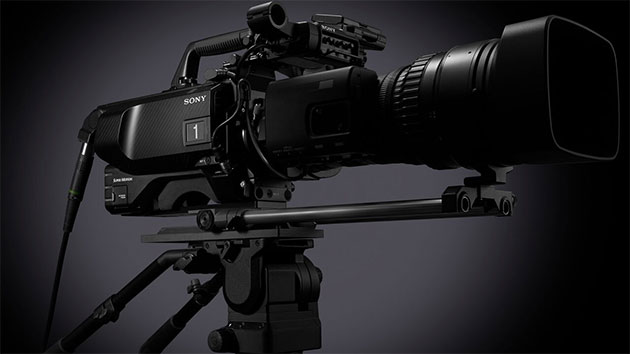55-inch OLED Client Monitor, 2/3-inch B4-mount 4K XDCAM Also in NAB Offing
At NAB today, Sony announced a new shoulder-mount camera that it said will shoot 4K at 480fps. Aimed at broadcast sports production, where super-slow-motion is even more critical than the ability to zoom in on a high-resolution frame of video without losing picture clarity, the HDC-4800 UHFR comes with a PL lens mount and a Super 35 global-shutter CMOS sensor.
Or, if you don't find 480fps impressive enough, you can always put the HDC-4800 to work shooting 720p and capture at a roaring 720fps.
The high-frame-rate picture is transmitted to Sony's new BPU-4800, a baseband processor with 4 TB of standard internal storage, via fiber, where it can be recorded simultaneously in high frame rate (HFR) and 10-bit XAVC.That means the HDC-4800 fits nicely into a Sony camera network, where it can be controlled via the HDCU-2000 and related broadcast gear such as the PWS-4500 live server.
A prototype of the HDC-4800 was used in the production of Super Bowl 50, Sony officials said.
Also debuting at NAB this year is Sony's latest 2/3-inch B4-mount XDCAM shoulder-mounted camcorder, which is being positioned as a 4K sibling to the PXW-X400 HD camera announced late last year, inheriting all of that camera's functionality. The new camera should arrive late in 2016.
And, because you're going to need something to play back all that 4K footage, Sony announced a new 55-inch OLED client monitor for HDR-capable color-grading and QC, the PVM-X550. It borrows the 12-bit signal-processing engine from the BVM X300 but scales it up to a 55-inch OLED panel.
In quad-view mode, the X550 can display color gamut, EOFT, white-point and frame rate independently in each quadrant, meaning it will allow users to compare HDR and SDR on the same screen, a feature that's about to become exceedingly relevant in the color suite as HDR is quickly gaining credibility in episodic television, at least for OTT programming.
On the archiving front, Sony upped its Optical Disc Archive to generation 2, increasing media capacity to 3.3 TB on a single cartridge. Read and write speeds have been doubled, the company said. A new scalable petasite library, standalone archiving station and multi-tape digitizing station are all on offer.
Crafts: Post/Finishing Shooting
Sections: Technology
Did you enjoy this article? Sign up to receive the StudioDaily Fix eletter containing the latest stories, including news, videos, interviews, reviews and more.











Leave a Reply